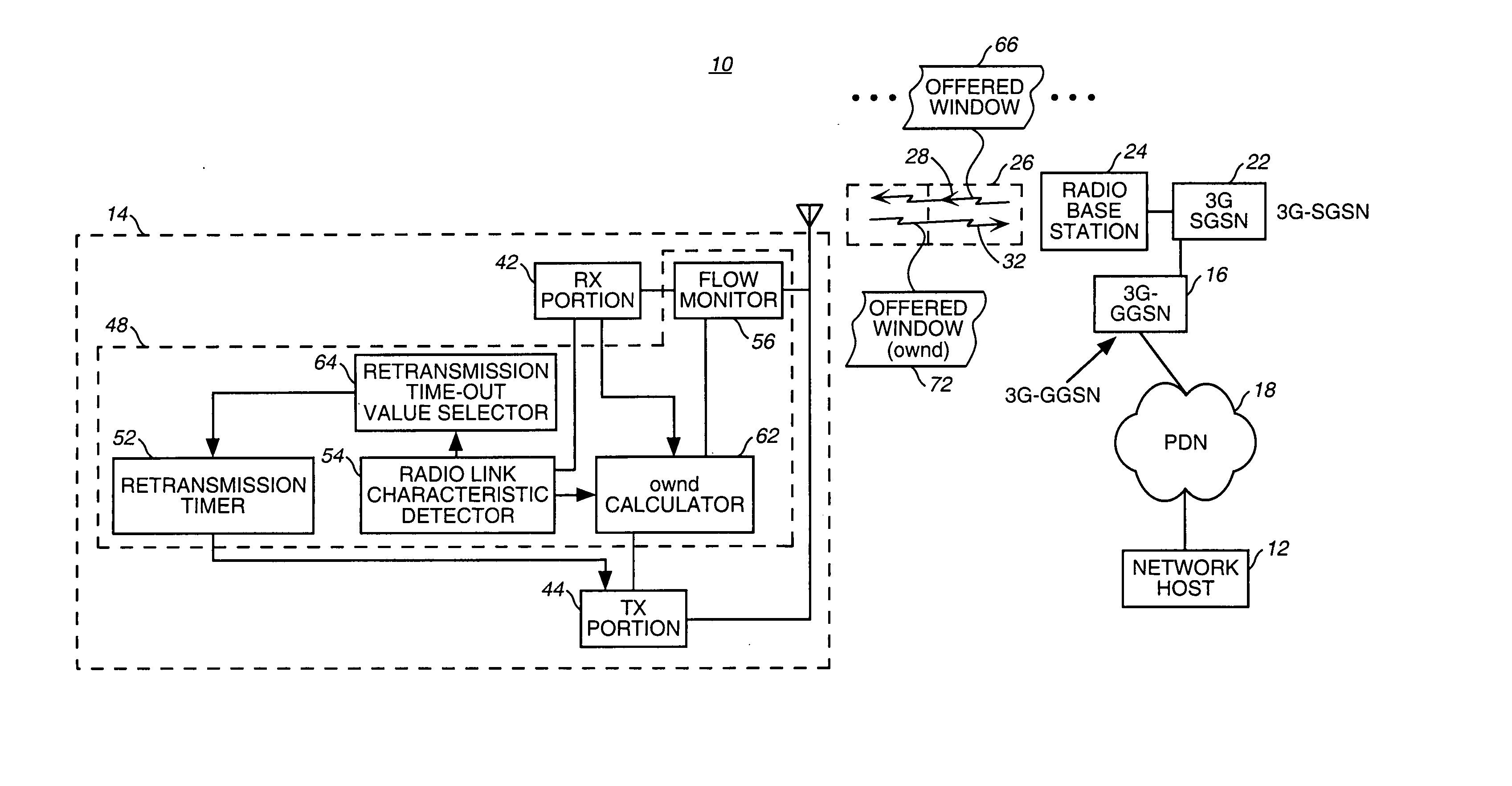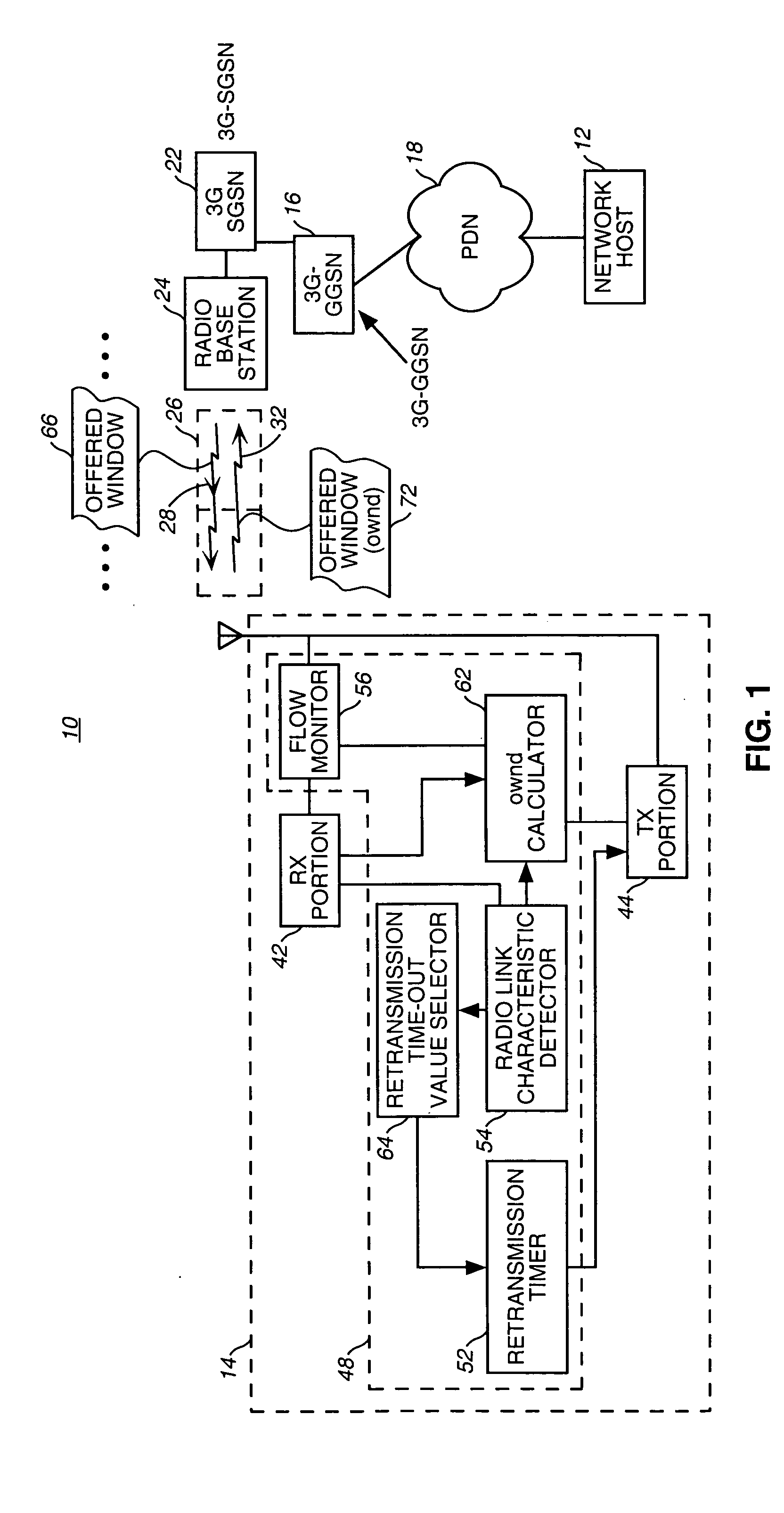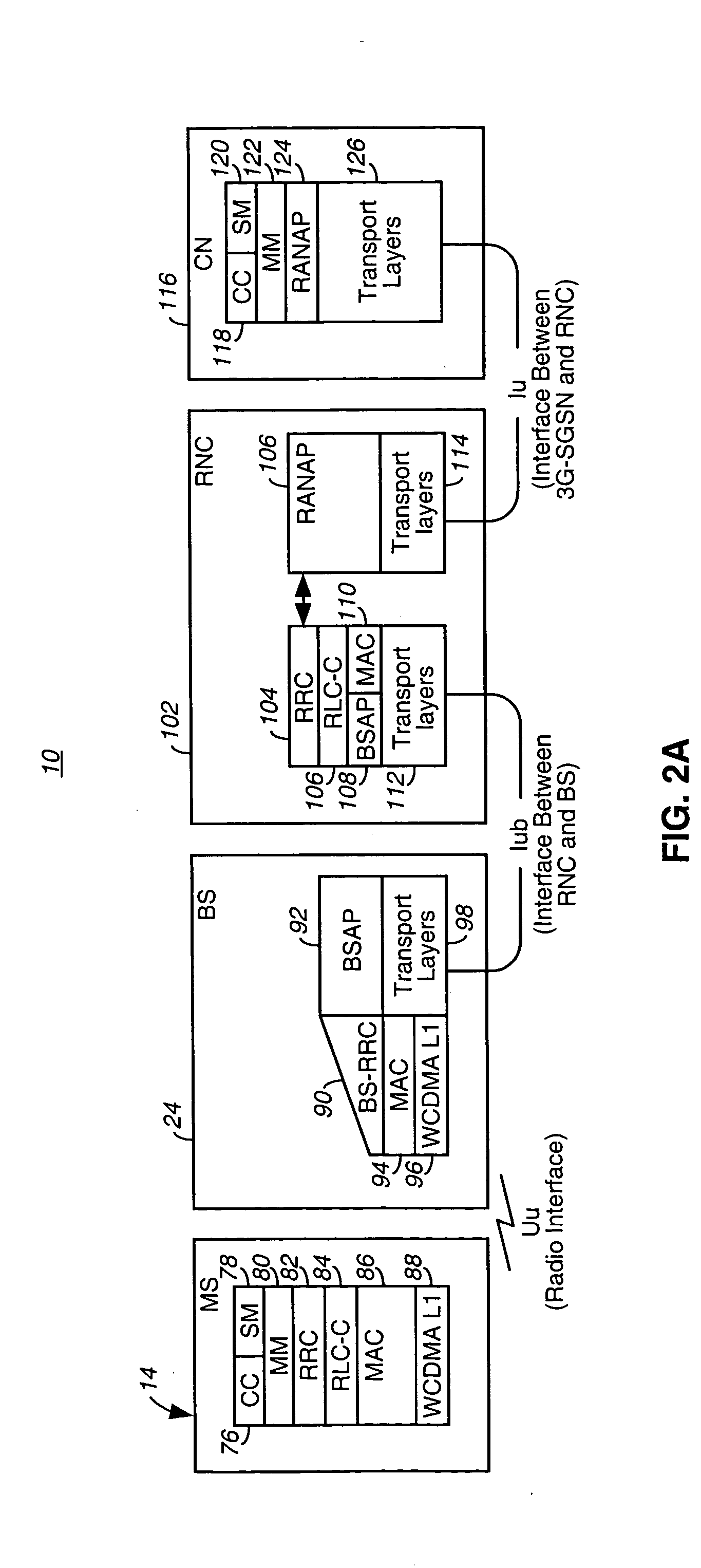Apparatus, and associated method, for communicating packet data in a network including a radio-link
a technology of packet data and radio link, applied in the direction of network traffic/resource management, transmission systems, wireless commuication services, etc., can solve the problems of packet loss, packet congestion, packet loss at the radio part, etc., to improve tcp flow control, improve throughput rate, and optimize communication
- Summary
- Abstract
- Description
- Claims
- Application Information
AI Technical Summary
Benefits of technology
Problems solved by technology
Method used
Image
Examples
Embodiment Construction
Referring first to FIG. 1, a packet communication system, shown generally at 10, provides for the communication of packet data between a sending station and a receiving station. For purposes of illustration and to describe operation of an embodiment of the present invention, a network host 12 and a mobile host 14 form stations between which packet data is communicated. While the network host 12, in the exemplary illustration of the Figure, is a wireline device, implementation of the network host as a mobile device could alternately be represented. And, while the exemplary implementation shall be described with respect to a network in which the TCP (Transmission Control Protocol) is employed and TCP / IP-formatted data packets are communicated between the network and mobile hosts 12 and 14, other systems can analogously be represented.
Control of when a data packet is transmitted is effectuated during operation of an embodiment of the present invention by taking into account characte...
PUM
 Login to View More
Login to View More Abstract
Description
Claims
Application Information
 Login to View More
Login to View More - R&D
- Intellectual Property
- Life Sciences
- Materials
- Tech Scout
- Unparalleled Data Quality
- Higher Quality Content
- 60% Fewer Hallucinations
Browse by: Latest US Patents, China's latest patents, Technical Efficacy Thesaurus, Application Domain, Technology Topic, Popular Technical Reports.
© 2025 PatSnap. All rights reserved.Legal|Privacy policy|Modern Slavery Act Transparency Statement|Sitemap|About US| Contact US: help@patsnap.com



